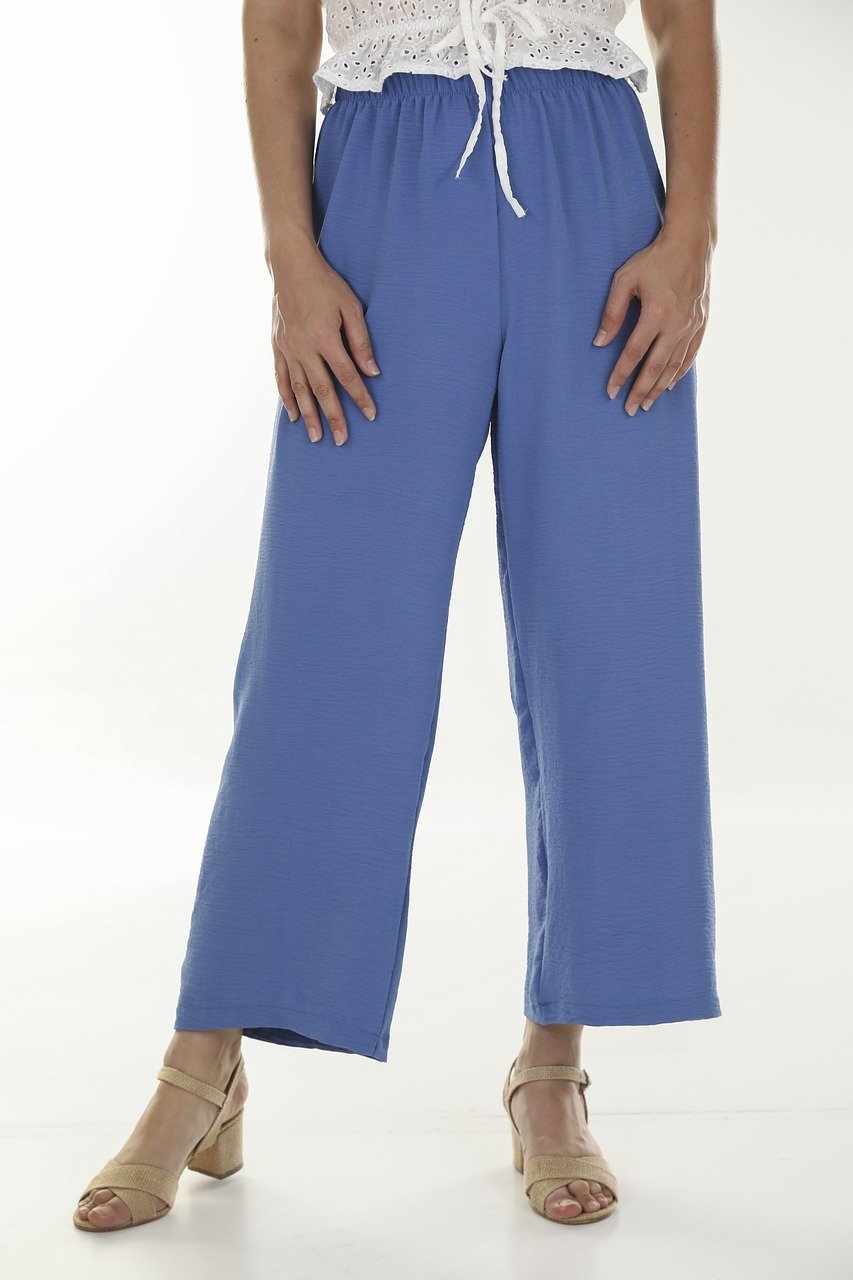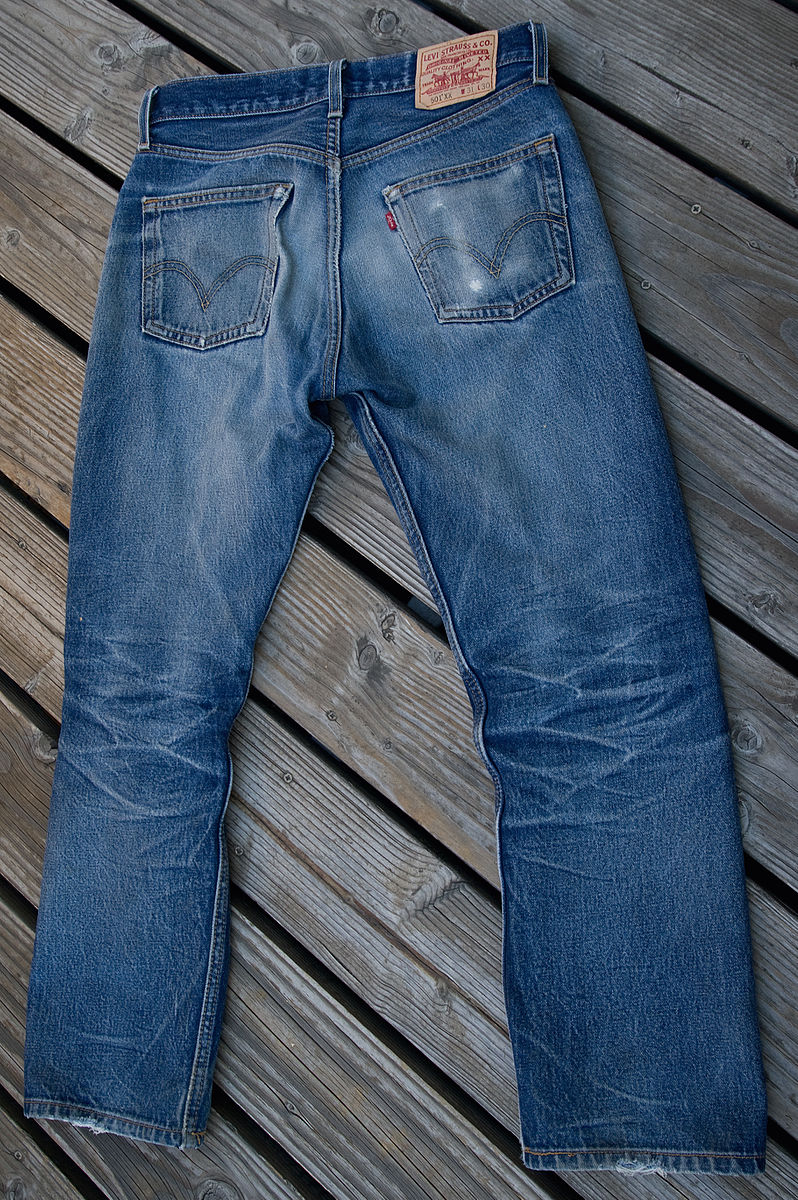Difference Between Jeans and Pants
While both jeans and pants are a type of bottom-wear clothing intended to cover the lower part of the body extending from the waist to the knee, ankle or the foot, jeans belong to the category of high-quality pants made from a special cotton twill weave denim fabric. Both can be worn casually for everyday leisure activities, jeans are made from a very durable cotton fabric, usually colored with indigo dye, resulting in its distinct blue color. Jeans are known for their durability and longevity, and can be worn for several days without washing. However, pants are not as heavy-duty and leisurely as jeans.

What are Pants?
Pants, also called trousers or slacks, refer to just any bottom-wear garment that are designed to cover the lower part of the body, extending from the waist to the foot around the ankle and separating each leg with two different sections. Pants are a pair of bifurcated outer garment, a garment used by men until the late 20th century. Since then, the term pant has been used to refer to all kinds of bottom-wear garments. In America, they refer to pants simply as trousers, while in the United Kingdom, pants refer to undergarments or underwear. In general terms, pants refer to just any kind of bottom-wear, be it jeans, slacks, trousers, chinos, pajamas, corduroys, shorts, cargo pants, sweatpants and more.
The oldest know trousers came from Central Asia somewhere between the 10th and 13th century BC, among nomadic herding cultures who found pants the most appropriate piece of clothing for riding horses. The oldest pants found were believed to be from China’s Tarim Basin, but pants were also worn by other nomadic equestrian cultures about 2500 years ago. The early pants were straight legged with a wide crotch, sewn together from wool cloth. Pants were considered the garment of the men until the early twentieth century, after which trousers for women started selling for various leisure activities.

What are Jeans?
Jeans have been an important fashion staple and an everyday casual bottom-wear for as long as trousers have been around. The year 1873 marked the birth of the iconic blue jeans, the day when Levi Strauss partnered with Jacob Davis to acquire a patent on the process of putting the rivets in men’s workwear for the very first time. Soon they started manufacturing copper riveted waist overalls out of a brown cotton duck and blue denim. This marked the birth of the timeless blue denim. Since then, the blue jeans have been recognized as an iconic piece of clothing, liked by young and old, male and female, famous and ordinary alike. Jeans are casual-wear trousers made from a high-quality, durable cotton fabric popularly known as ‘denim.’
No other fabric has received such a global recognition as denim, which has been used extensively by people of all ages, genders, and classes. Jeans often refer to a particular type of pants, called blue jeans or denim jeans. Denims have been around for over a century in the clothing industry, especially in the manufacturing of blue jeans, among other clothing line. Although, blue symbolizes jeans, they come in a variety of colors like black, grey, brown, and so on. Today, jeans come in tailored fit options for just any waist size and body shape; be it slim, skinny, tapered, relaxed, regular, or loose fit jeans. Although, it was believed to have originated in Europe, the durability and adaptability form of the denim found its home in the United States, where it became an American icon.
Difference between Jeans and Pants
Type
– While both jeans and pants are fashion staples that are worn to cover the lower part of the body with separate sections for each leg, pants refer to a much broader category of bottom-wear garments including jeans. The American people think of pants as just any bottom-wear that covers the lower portion of the body, while the British people refer to pants as undergarments. Jeans is a universal fashion symbol that refer to high-quality, durable bottom-wearing pants.
Fabric
– Although, cotton is the most used fabric in making both casual and formal trousers, different types of fabric are used to make all kinds of pants. The natural fibers used in the making of trousers are cotton, linen, wool, and silk. The artificial fibers include nylon, polyester, rayon, fleece, acrylic, etc. Jeans, on the other hand, are made of hard and durable warp faced twill cotton fabric called denim.
Style
– Pants come in a variety of styles based on occasion, style preference, and the kind of job you do. For casual outdoors, particularly summers, chinos are a classic alternative that come in a myriad of colors for every occasion. Other styles of trousers to suit a range of occasions are cords, drawstring trousers, corduroys, pajamas, cargo pants, track pants, slacks, shorts, khakis, joggers, etc.
Durability
– Jeans are heavy-duty pants made of hard and durable twill cotton fabric called denim, which has been used for centuries for the manufacturing of overalls and trousers for hard labor, which calls for durability. In fact, denim has been considered as the fabric of hard work known for its durability and adaptability. Pants, on the other hand, are not as hard-wearing and durable as denim jeans.
Jeans vs. Pants: Comparison Chart

Summary
In a nutshell, jeans clothing has long been known for their durability, longevity, and adaptability, thanks to the strong cotton warp-facing twill fabric called denim, which is used in the making of jeans. Denim is a sturdy cotton fabric woven with an indigo, gray or mottled white yarn, and it has been used extensively by people of all ages, genders and classes. Pants is a collective term used to refer to all kinds of pants, from casual-wear chinos to corduroys, pajamas, cargo pants, track pants, slacks, khakis, joggers, and jeans.
- Difference Between Caucus and Primary - June 18, 2024
- Difference Between PPO and POS - May 30, 2024
- Difference Between RFID and NFC - May 28, 2024
Search DifferenceBetween.net :
Leave a Response
References :
[0]Paul, Roshan. Denim: Manufacture, Finishing and Applications. Amsterdam, Netherlands: Elsevier, 2015. Print
[1]Maresh, Jan Saunders. Sewing For Dummies. New Jersey, United States: John Wiley & Sons, 2010. Print
[2]“Understanding the Difference Between Denim and Jeans.” masterclass.com, MasterClass, masterclass.com/articles/understanding-the-difference-between-denim-and-jeans#what-is-denim. Accessed 18 May 2021.
[3]Image credit: https://commons.wikimedia.org/wiki/File:Levi%27s_501_raw_jeans.jpg
[4]Image credit: https://pixabay.com/photos/pants-blue-fashion-clothes-woman-5400676/
